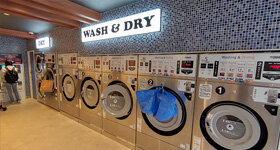Netgear DG834G 54Mbps Wireless Router Review
申し訳ありませんが、この記事は和訳がございません。
Just received my Netgear DG834G wireless router today from Amazon.co.uk. I ordered it last Wednesday choosing the Super Saver option for around £56. It was dispatched on Sunday and it arrived today on Tuesday just as their estimation said it would. Brilliant stuff!
So why the move to get an actual wireless/ADSL modem router when I already bought Datel's WiFi Max adapter for my DS? Well, the problem with that was I had to keep my PC on before I could connect to the WFC network. Since I hardly download stuff now, I don't really use the PC that much apart from updating this blog and doing some other work so it was pointless to keep it on. That said, my brother also shares the internet connection through my PC so again, I can't turn it off even though it's just a waste of resources (i.e., power). That's why I decided to go for an actual router and use the WiFi Max adapter on my brother's PC.
Packaging
The Netgear DG834G router features an ADSL2+ modem, double firewall, 4-port LAN switch and wireless access point all in one. Inside the box you have everything you need to get started and all of this is packaged inside an egg carton sort of box. First time I seen packaging like this being used instead of the usual foam or cardboard.
You'll notice that the packaging doesn't come with a printed manual itself or any quick start guide so those new to routers may get confused about what to do right at the start. You'll find all the instructions and other documentation are stored on the sealed CD.
Setup
To start configuring your router, your computer itself will have to already have a LAN card installed (which I already have) or, some form of wireless hardware. After plugging in the LAN cable, ADSL line and turning the router on, the bright green LED lights are turned on. There are two ways you can go about tweaking the router's settings; you can dive right into the router's home page via your browser or, use the configuration program that comes along on the CD.
For me, I chose to configure everything manually but even then, all I had to do was enter the user name and password for my ISP account and I was online immediately. No problems whatsoever so far.
Security & Settings
Just like the WiFi Max adapter, the standard security settings have to be set unless you want people to "piggy-back" on your internet connection freely. The Netgear has support for WEP, WPA-PSK and WPA-802.1x but since I was going to be using my DS (which doesn't support the better WPA keys) with the router, I decided to setup a WEP key only which was done easily via the Wireless Settings from the menu. As you can see, the browser site gives you help along the way, explaining things in a blue box to the right.
MAC address filtering is a standard feature with wireless devices like this and again, setting this up was a cinch to give any hacker an extra hurdle to jump. Unlike the Wifi Max you didn't have to manually enter the MAC addresses as the router will detect anything trying to access it wirelessly. You can then just simply click the add button or, copy and paste the MAC address and give the connecting device a name so that you know what's what.
Unfortunately, the router doesn't have a power setting that allows you to lower the range of any wireless access which the WiFi Max does. The Netgear has a range of 35 metres and I found that the signal was still fairly strong outside when I was accessing it with my DS about a house away. But this shouldn't be any problem with the above security setup.
Other settings of note include firewall rules where you can filter incoming/outgoing traffic. The router itself blocks known port scans and known DoS (Denial of Service) attacks and logs them by default. There are also some parental controls that allow you to block sites by keywords or domains if required and setup a schedule for when these rules are active.
Networking
I could link up all the computers in the house easily and share files as soon as the appropriate WEP key was set on them and their MAC addresses were added to the router's list. The WiFi Max adapter I previously bought also worked perfectly with the router once it was set to Station mode. And most important of all, the DS can also connect to the WFC network without any tinkering with the firewall.
Conclusion
Overall, an extremely easy to setup router that works with the DS without much tinkering! Now if only the logs were as detailed as my software firewall!
*Note that this is the Netgear DG834G v3 model with firmware v4.01.06.


Xcomp 作者
Hasan
plus i am 10 yars old so please reply.